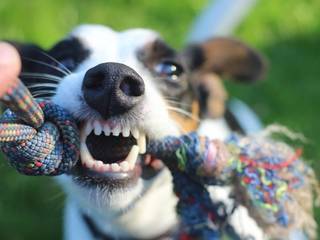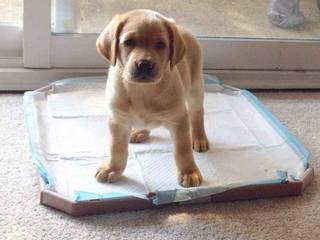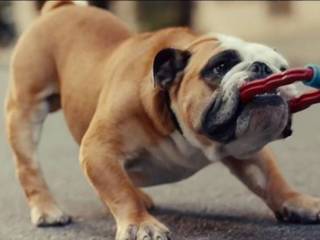Before the puppy enters your home, it is necessary to write down addresses and phone numbers of vet clinics. In addition, if there were not any dogs in the house, the puppy should be examined by a vet to get the most complete information about its care and health.
The owner must follow the schedule of vaccinations, which the vet will make. The vet should examine your pet once a year.
Walk
During each walk the dog should be watched closely. Learn and remember its habits. How it runs, whether it is vigorous, how it natural needs... Watch and necessary for the color of feces and urine.
The vet may ask it examining your puppy. Watch a curious puppy has not received any injury during a walk or poisoning.
Feeding
For feeding the pet you should use clean and dry dishes; quality products; fresh and clean water. If the owner buys a ready feed, then it must be in the original packaging. It is necessary to buy it from a trusted seller and only in specialized shops.
What is first aid?
The main objective of the first aid is to make the suffering of the pet easier, as well as to prevent the negative consequences of an accident. For that, the owner must acquire communication skills with sick pet, to assess the situation, and to take the best decisions quickly.
The owner has to stop bleeding quickly and correctly, do CPR, treating minor wounds and large lacerations; give medicine, apply tire, induce vomiting, give a jab...
So what to do if the favorite was in trouble?First, examine the pet and then give the first aid...
How to take the injured pet to the vet?
A dog when it is injured is badly frightened. It feels sharp pain, does not know how to help itself so it can bite an approaching to it man.
If there is a fracture, the improper transporting can worsen the condition of the pet. First, it is necessary to prepare the support to minimize the pain, as well as for insurance against possible damage due to the traffic. Put the dog on the top of the support, or so that it is hung from the support. Dog transporting should be in the supine position, covering it with a thin, but warm blanket or quilt.
If a dog has a fracture, then you have to carefully, slowly and gently lift it while maintaining the hands in front and behind, and to pass on to canvas, you can use a blanket, jacket or coat. Further, the canvas is taken on the opposite ends (if used jacket or coat, you need to take for the sleeves and bottom edges) and move your pet in the car.
If the pet has a spine fracture or broken pelvic bone, the dog must be passed on to a hard sheet of plywood, and gently shift in the car. Further, it is necessary to drive a car so that was not shaking in the cabin. Make sure no one has raised, tilted, and touched the dog.
How to measure the pulse?
The easiest way to measure the pulse is on the femoral artery. Pulse is well measured on the inner part of the thigh. Press the fingers, but not too much, to the point of the trunk to the hip joint, and you can feel the pulsating.
You can measure the pulse on the brachial artery on the inside shoulder side. You can press your fingers to the elbow area or attach the palm to the chest. Softly and gently, without strong pressure, attach the index and middle fingers to the chest, on the left, behind the elbow joint.
How to determine the respiratory rate?
The movement of the chest, nose wings or the abdominal wall determines dogs respiratory rate. When the dog is calm, its respiration rate ranges from twelve to twenty breaths per minute. Why such a wide margin?It all depends on age, breed and pet size. Moreover, when the pet is playing, running or it is excited it is very difficult to determine its respiratory rate...
How to induce vomiting?
It is necessary to open the pets mouth and pour on the tongue half a teaspoon of large table salt. Salt irritates flavoring recipes, thereby causing the dog to vomit. We must act immediately if an accident occurred with a dog, for example, poisoning...
How to maintain the vital functions of the brain?
When a heat stroke or electric shock, there is disturbed blood flow in the dogs brain. What does the master have to do?It is necessary to support the vital functions of the brain. We must act as quickly as possible, since the lack of oxygen, it is enough two or three minutes, and the consequences of violations would be irreversible.
The pet should put its head down, holding it by its hind legs. And if the dog is big and heavy, then put it so that the head is hanging down, and put its hind legs so that they were above the torso. This location provides the blood supply to the brain.
How to recover its breath?
Respiratory failure or a full stop, as a rule, is due to drug administration, defeat poisons, shock or pain due to injury. Breathing can be restored if you tickle the nasal mucosa; if you make several sharp slaps with your hand over its chest, in this case, the diaphragm activates its work; you can spray the dog with cold water while patting the chest with a wet towel; you can bring to the nose cotton wool soaked with sal ammoniac.
How to stop intestinal bleeding?
Bleeding may occur due to swallowing foreign objects, as well as in certain diseases. How do you know that pet has intestinal bleeding?Look at the feces and, if they look like tar, so the dog needs help. If there is strong bleeding, the dog may defecate of very dark feces, in this case, the owner shall ensure complete peace for the pet, do not feed it, and do not give enemas and laxatives!On the belly of the dog a cold compress is put, gently transfer it into the car and immediately to the vet!
How to stop the bronchial hemorrhage?
Bleeding from the mouth or nose may be caused by a stroke, fall or chronic disease. The disease may be accompanied by cough with blood. In this case, it is necessary to calm down your pet, do not give it to bark and move; give cough medicine and then take to the vet.
How to apply a splint?As a rule, the splint is applied at the fracture. However, if the dog is scared, and worried, it will be problematic to apply the splint. It will be twitching, biting and trying to throw disturbing it subject, thus, will only worsen the state of the broken bones. What to do?Try as much as possible to limit the mobility of the pet, then...
If the foreleg is broken: tightly wrap a stick or board to the foot and then take your dog to the vet. If the hind limb is broken: do the same as with the fore leg, only apply the splint on the inner side of the thigh and the second one on the outer side of the limb. If the fracture is such that the bone is visible: apply a sterile cloth to the point of fracture, apply the splint and give the dog a pain reliever, such as analgin, to five milliliters.






